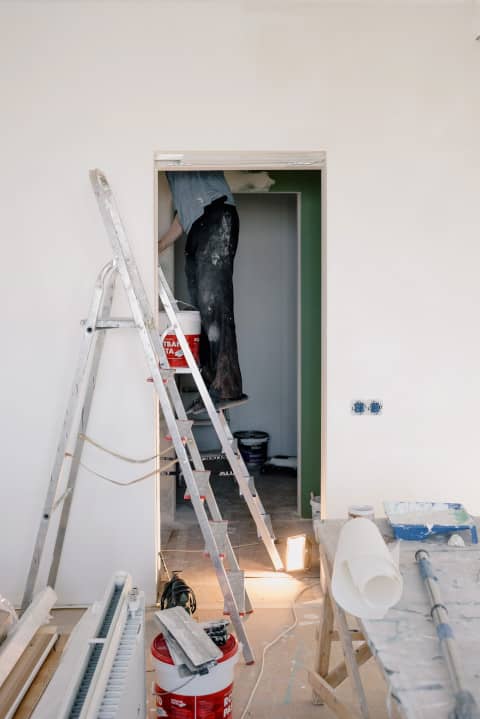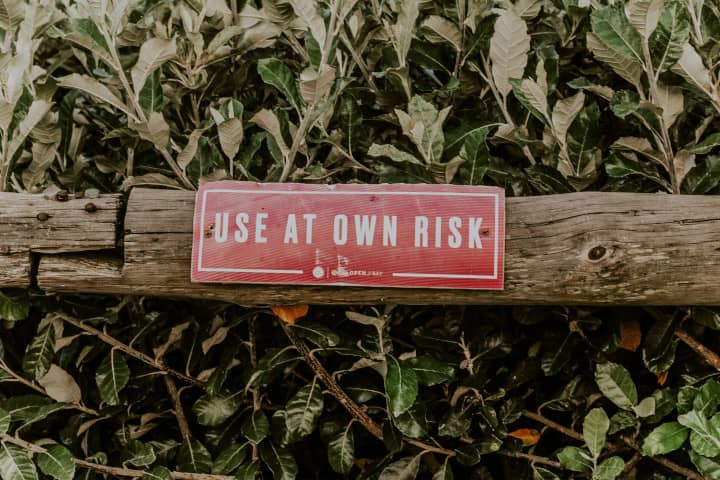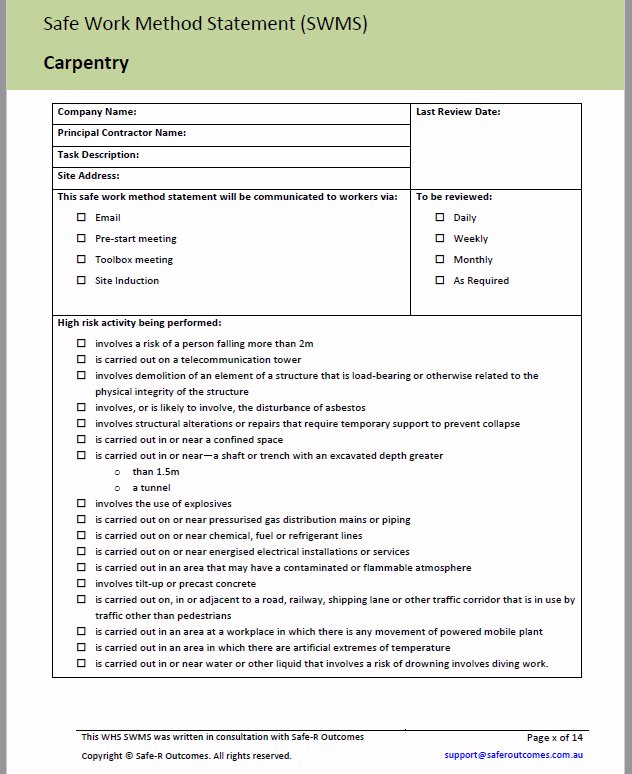As a business owner, it’s important to ensure that your employees are safe while they’re working, and if you’re an employee you want to make sure you are working safely. One way to do this is by ensuring the use of proper safety equipment, such as ladders. Ladders can be dangerous if not used correctly, so it’s important to understand ladder safety.
Every day, employers and employee take their safety for granted. They climb up and down ladders without a second thought, but what they may not know is that ladder accidents are one of the most common workplace accidents.
In this blog post, we’ll discuss some tips for ladder safety, so you can avoid becoming one of these statistics.
If your business or job involves any kind of ladder work, it’s important to take precautions to prevent injury.

What can go wrong if you don’t follow ladder safety?
If not used correctly, an ordinary ladder can easily injure or kill a person. Most people think of injuries being caused by falls from very high ladders, but unfortunately this is untrue. In our time in the safety business we have seen serious injuries to workers from ladder falls from as little as one metre off the ground, and that is why we think ladder safety should be discussed regularly. We’ve even created a Ladder Safety toolbox talk that you can download for free.
Ways that you can be injured when working on a ladder include:
- Slipping off the ladder
- Being knocked off the ladder by an object (for example, a falling branch)
- Having the ladder collapse under you
- Having the ladder slide away from you
- Falling through the rungs of a ladder
- Being hurt by falling tools while on the ladder
Injuries that you may suffer include:
- Electric shock from working too close to electrical wiring
- Soft tissue injuries
- Bone fractures
- Head injuries
- Penetration injuries
- Cuts and bruises
- Dislocations
- And also, unfortunately, sometimes death
You should only use a ladder when it’s really necessary, by completeing a risk assessment, and looking at the hierarchy of control you can decide whether using a ladder is required or whether you can make some changes to your work process to eliminate the use of a ladder.

Here are our top tips for ladder safety:
- Make sure the ladder is in good condition and has no damage that could compromise its stability
- Don’t use a ladder if you’re feeling dizzy or unsteady on your feet.
- Always use a ladder in accordance with the manufacturer’s instructions
- Face the ladder when ascending or descending
- Do not overload the ladder – only use it for tasks that it is designed to handle.
- Inspect the Ladder before each use, and if you notice any damage, cracks, or anything that could compromise the ladder’s stability – do not use it.Ensure your ladder meets the A/NZ Standard for ladders, there should be a sticker on the ladder to let you know
- Ensure that your ladder is the right height for you to use, and that it’s firmly planted on level ground
- Always ensure 3 points of contact
- When setting up the ladder ensure that there are no protusions or other hazards that could cause injury if you were to fall off the ladder
- Ensure you are wearing the right footwear when using ladders – they should have a rubber non-slip sole, and be strong enough to keep your footing
- If you’re unsure about anything, don’t risk it! Ask someone who is experienced in safe ladder practices for their advice.
- Use a tool belt so that you have your hands free to climb the ladder and work
- Don’t forget about personal protective equipment – make sure it is suitable for the work you are doing and doesn’t impede on you being able to safely complete your work on the ladder
- Climb down facing forward, with your feet together and back against the ladder
- If you can, use a second person to hand tools or materials up to you so that you don’t have to climb down and up again with materials in your hands
- Assess whether another piece of equipment would be of better use such as an EVP or mobile scaffolding
- If you have to work on a roof, never work alone – always make sure someone is aware of your whereabouts and that they can quickly get help if needed
- A self-closing hinge should be used to prevent the ladder from closing while climbing
- Keep your weight centered over the ladder when working
- Don’t overload step ladders – only use them for tasks they are designed to handle
- Always ensure there is no obstruction that will prevent the ladder from opening fully
- Make sure the base of the ladder is well spread to provide a good anchor – if in doubt, get an expert opinion
- Only one person should be on a stepladder at any given time; make sure there is room for them to get off safely
- If you have to work with gas or electrical equipment, make sure the area is well ventilated to reduce the risk of inhalation
- Never overreach when climbing a ladder
- Never lean out too far when climbing, no matter how stable the ladder is – you could fall at any moment
- If you have to stand on your stepladder’s top step, don’t climb up with all your weight – only use it for standing on while carrying items or performing tasks
- Make sure you are able to maintain a two hand grip even when you’re at the top of your ladder – you could lose your footing
- Never use a stepladder as a step to enter or exit a vehicle, and never climb onto something using it as support
- When storing ladders make sure they are not leaning on anything that can damage them – they should be stored vertically against a wall with the steps flat or folded up
- If you have to carry your ladder on public transport, ensure that it is in its fully open position when moving with the feet planted firmly on the ground
- Where possible tie or secure your ladder at the top and the bottom to prevent it from falling while you’re working
- Use a product like ‘Lock Jaw Ladder Grip‘ to ensure your ladder is firmly connected to the guttering of the roof you are working on

Ladder Safe Work Method Statement
If you’re doing construction work at a height of more than two metres in Australia, you’ll require a safe work method statement (SWMS). A SWMS is a documented plan that explains all of the procedures that an employer will take to decrease hazards associated with any work that takes place at a height. If you’re working on top of a ladder, for example, your SWMS must specify how you’ll safely complete the work, what kind of fall protection equipment you’ll use (if necessary), and who will be participating in the task.
It is not necessary to complete a ‘working at height or ladder safety SWMS’ for a specific task like working on a ladder; a safe work method statement can be written for the full project or trade. Even if the work isn’t being done at a height of more than two metres, you can have a SWMS in place to ensure that your employees are aware of their safety responsibilities and that you are completing your legal obligations as a business owner.
Before employees begin any work at height, employers must verify that a SWMS is in place, and employees must acknowledge the SWMS when it is issued. Employers should also have an emergency response plan in place, which addresses what would happen if someone fell from a height and was harmed.
Working at height, and lack of ladder safety is one of the leading causes of fatalities and significant injuries in Australia, so everyone should follow these measures to stay safe on the work.
What are SWMS and how do I write one using a free template? is a great resource to help you write your own ladder safety or working at height SWMS.
Ladder safety toolbox talk
Giving a ladder safety toolbox talk is a simple and effective way to teach your employees how to improve their ladder safety skills. It typically takes a few minutes and ensuring that everyone’s knowledge is current. All employees should take the toolbox talk seriously. Making ladder safety toolbox talks at least a little bit appealing can help reduce injuries and improve the safety culture of your business. To make it more engaging, ask questions like “What is the most common workplace ladder injury?” or “What is an easy way to use a ladder safely?”
How frequently do I have to give a toolbox talk on ladder safety?
A ladder safety toolbox talk should be done before starting a new project or when your personnel changes. It’s an important aspect of keeping your workplace safe, and it could save lives. Check out our guide 5 Toolbox Talk hints and tips to make your life easier.
Remember, if your business involves any kind of ladder work, it’s always best to take precautions before climbing – just to be on the safe side. When it comes to ladder safety, common sense goes a long way. It’s important that you understand the risks involved, and that you’re aware of what you need to do in order to stay safe.
Ladder work can be dangerous, so it’s important to always follow these tips to avoid injury. Ladders can be a useful tool when used properly, but they do pose a risk of injury if not used correctly. Take these tips into consideration to prevent any accidents from occurring related to ladders.
How can Safe-R Outcomes help your business?
Our Professional subscriptions contain many essential documents including:
- WHS Management Plans / Safety Manuals
- SWMS (if the job entails high risk tasks)
- a range of SOPs, Registers, Toolbox Talks, Checklists and Policies
These can all be downloaded and are not blank templates, so can be used immediately.
We also provide Induction training to help you on-board new employees and contractors.
As you can see it is all done for you so it makes it nice and simple. You can find out more on the Industries and Professions page.
If you’re concerned about the time commitment and knowledge required to implement the correct documents, procedures and training for forklift safety, Safe-R Outcomes can help. We strive to reduce the time and cost for businesses to implement their legally necessary safety requirements.


